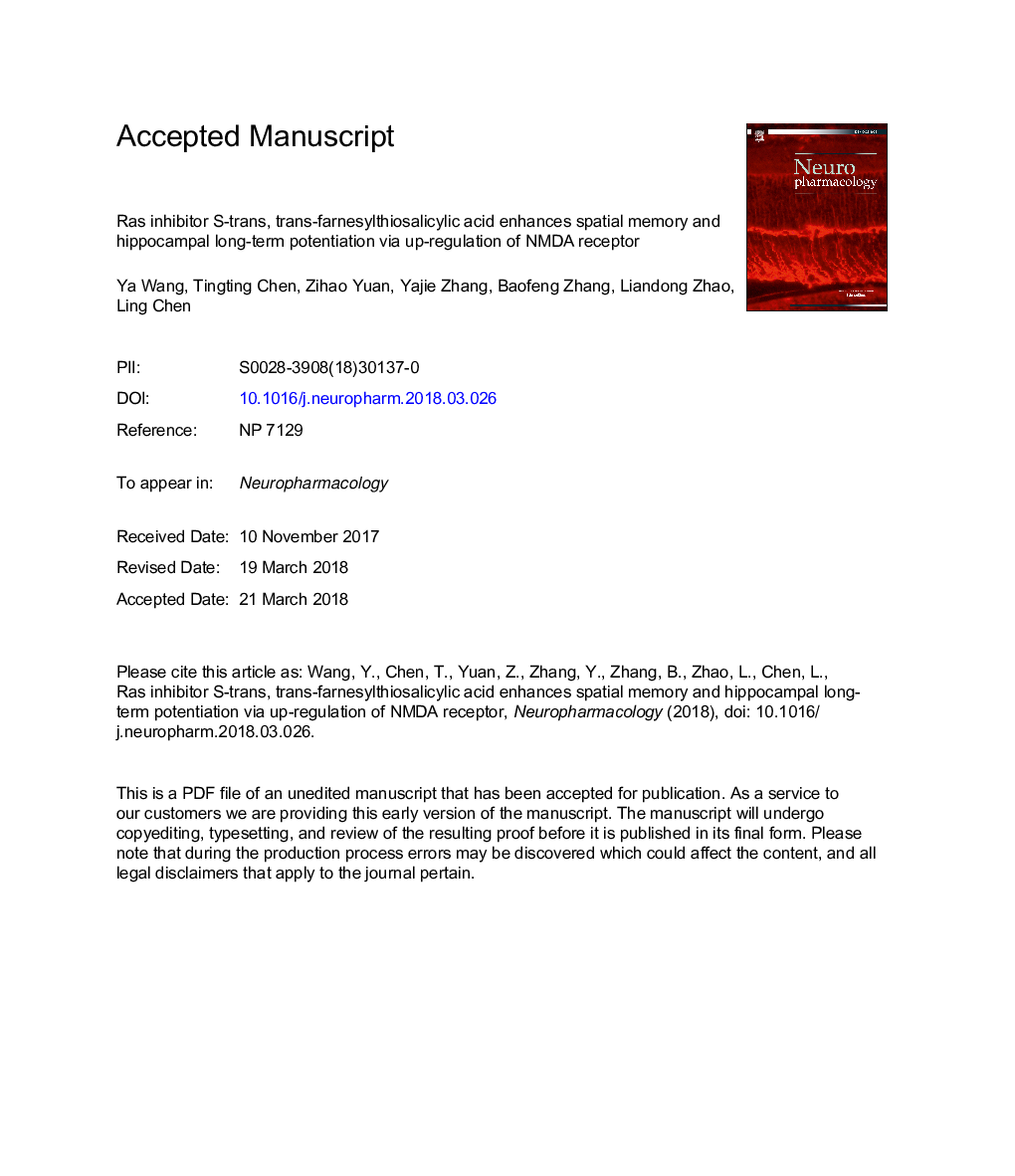| Article ID | Journal | Published Year | Pages | File Type |
|---|---|---|---|---|
| 8516365 | Neuropharmacology | 2018 | 42 Pages |
Abstract
Statins by reducing farnesyl-pyrophosphate or farnesyl transferase inhibitors have been demonstrated to enhance spatial memory and long-term potentiation (LTP). The objective of this study was to investigate effects of the synthetic Ras inhibitor S-trans, trans-farnesylthiosalicylic acid (FTS) on spatial cognitive function in adult mice, synaptic plasticity in hippocampal CA1 regions, and NMDA receptor (NMDAr) activity of pyramidal cells. Here, we show that administering FTS (5â¯mg/kg, i.p.) enhanced spatial cognitive performance, as assessed via Morris water maze and Y-maze tests. Treating hippocampal slices with FTS (5â¯Î¼M) for 2â¯h enhanced selectively NMDAr-dependent LTP without changing the synaptic properties. In comparison with the controls, the FTS-treated slices showed increases in the amplitude of NMDA-evoked currents (INMDA) and the phosphorylation of NMDAr GluN2A/GluN2B subunits and Src. The Src inhibitor PP2 blocked the enhancing effects of FTS on the activity and phosphorylation of NMDAr. In FTS-treated slices, basal levels of CaMKII, ERK2 and CREB phosphorylation did not differ significantly from those of controls; however, high-frequency stimulation-induced increases in CaMKII, ERK2 and CREB phosphorylation were more significant than in the controls, which were sensitive to PP2 and NMDAr antagonist MK801. Furthermore, the phosphorylation of AMPA receptor GluR1 during LTP was higher in FTS-treated slices compared with the control, which depended on Src and ERK1/2 signaling. The results indicate that the Ras inhibition by FTS can enhance NMDAr-dependent LTP by increasing Src activity to promote NMDAr GluN2A/GluN2B phosphorylation, which then leads to spatial memory potentiation.
Keywords
CREBHFSNMDARMWMIPIaCSFFTSCaMKIIPPRGRFinter-pulse intervalERKFPPPPFGGPPPBSGTPaseDMSOEPSCEPSPMAPKNMDA receptoranalyses of varianceANOVApaired-pulse facilitationlong-term potentiationLTPexcitatory postsynaptic currentstandard errorDimethyl sulfoxideSpatial cognitionfarnesyl pyrophosphateMorris water mazeartificial cerebral spinal fluidPhosphate-buffered salinepaired-pulse ratioHippocampusLong-term potentiation (LTP)excitatory postsynaptic potentialGTP-binding proteincAMP response element-binding proteinmitogen-activated protein kinaseextracellular signal-regulated kinase
Related Topics
Life Sciences
Neuroscience
Behavioral Neuroscience
Authors
Ya Wang, Tingting Chen, Zihao Yuan, Yajie Zhang, Baofeng Zhang, Liandong Zhao, Ling Chen,
